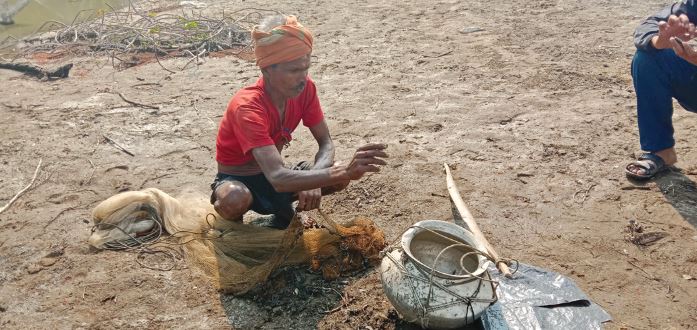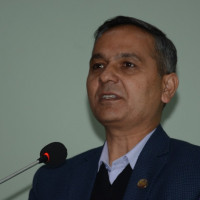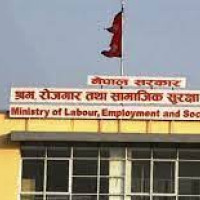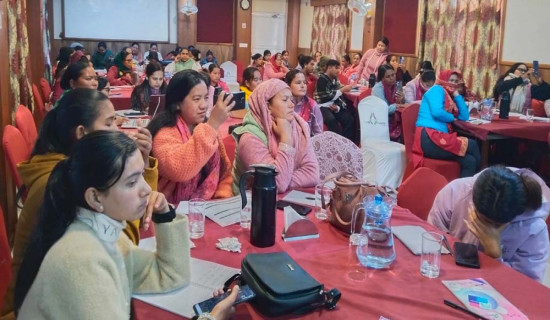- Thursday, 25 December 2025
Fishing livelihood in deep water in Koshi
By Jaykrishna Yadav Inaruwa, May 16:For Gulabi Mukhiya, a 50-year-old of Ward No. 3 of Koshi Rural Municipality of Sunsari district, fishing has been a major facet of his life. He says that fishing has been his source of livelihood for as long as he remembers.
While fishing had been enough to earn the livelihood for him and his family for years, Gulabi says that it has not been easy nowadays.
For many villagers like Gulabi, who belong to Malaha community, fishing has been their ancestral profession and the Koshi River their lifeline.
However, the number of fishes in the Koshi River, the largest river in Nepal, has declined in the recent years making it insufficient for the Malaha community to earn their livelihood by fishing alone.
“Our family has been surviving over the fishes of the Koshi River for over three generations now. But my generation is unable,” said Ramendra Bahardar, a fisher from Koshi Rural Municipality.
It is not only people from Malaha community who are struggling. Fishers from Malaha alongside Majhi and Bahardar communities living in Haripur, Bhyantabari, Shreepur, Kushaha west and Laukahi areas of Koshi Rural Municipality and Prakashpur, Madhuban and Mahendranagar areas of Barahachhetra Municipality are unhappy with the decline in number of fishes in Koshi.
Rajeshwor Bahardar of Ward No. 11 of Barahachhetra, who has been fishing in Koshi for 40 years, said,
“There are not even 10 per cent fishes in Koshi compared to the ones during earlier years.”
Rajeshwor added, “There were enough fishes in Koshi earlier. Koshi’s fishes were famous across the country and would be transported throughout Nepal and nearby cities of India as well. Nowadays, the fishes of Koshi cannot support our livelihood.”
The fishes of Koshi are famous among people travelling along the East-West Highway in places like Koshi Barrage, Bhantabari, Inaruwa, Jhumka and Itahari.
Fishers argue that the massive flood at the Koshi River in 2008, irregular flow of water and using poison in the river have led to the decline in the number of fishes.
Since many people used poison for fishing in Koshi, authorities had implemented a rule to allow fishing only after receiving a license.
However, the number of fishes has still been declining despite allowing only license holders to fish in Koshi.
According to the locals, there are around 300 families of Malaha, Majhi and Bahardar communities in different places of Sunsari and Saptari district who survive on fishing.
“Many from our community, especially youths, have started getting involved in other jobs than fishing. It is a saddening situation but people are bound to leave fishing nowadays,” said Mukesh Bahardar, a fisher from Bhantabari.
Hoteliers nearby the Koshi River along the highway informed that the quantity of famous Jalkapoor Fish of Koshi they receive now is far less than earlier years.
A group of around 12-15 fishers have been fishing around 20-22 kilogram fish from Koshi daily. “Since it is not a fishing season now, only 14-16 kilogram fish are netted on a daily basis recently,” said local Rahul Mandal.

















